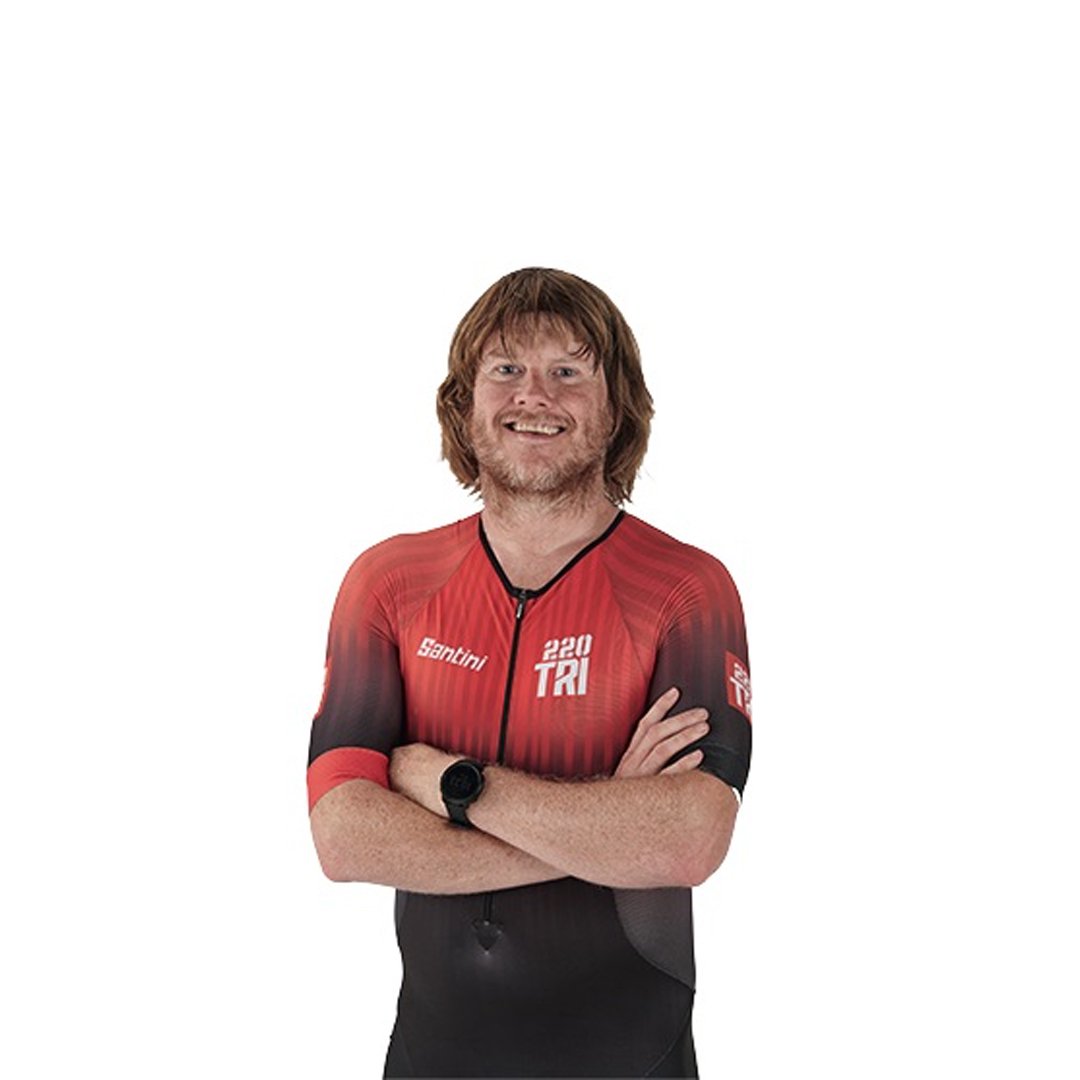Even the most committed cyclist can cast their eyes down and, enlarged by form-fitting polyester, view a gut that betrays their healthy hobby.
Age is a particular amplifier of this deep abdominal fat known as visceral fat. It protects the organs, so has virtues, but having too much can not only look less aesthetically pleasing, it can lead to inflammation and metabolic disease, too.
So how can you banish it? While there is some debate about whether fat loss can be localised (we go into more detail about this at the end of this article), continuing your cycling journey will certainly do no harm.
The following ideas will also help and are scientifically proven.
Tips to lose belly fat while cycling
Try interval training
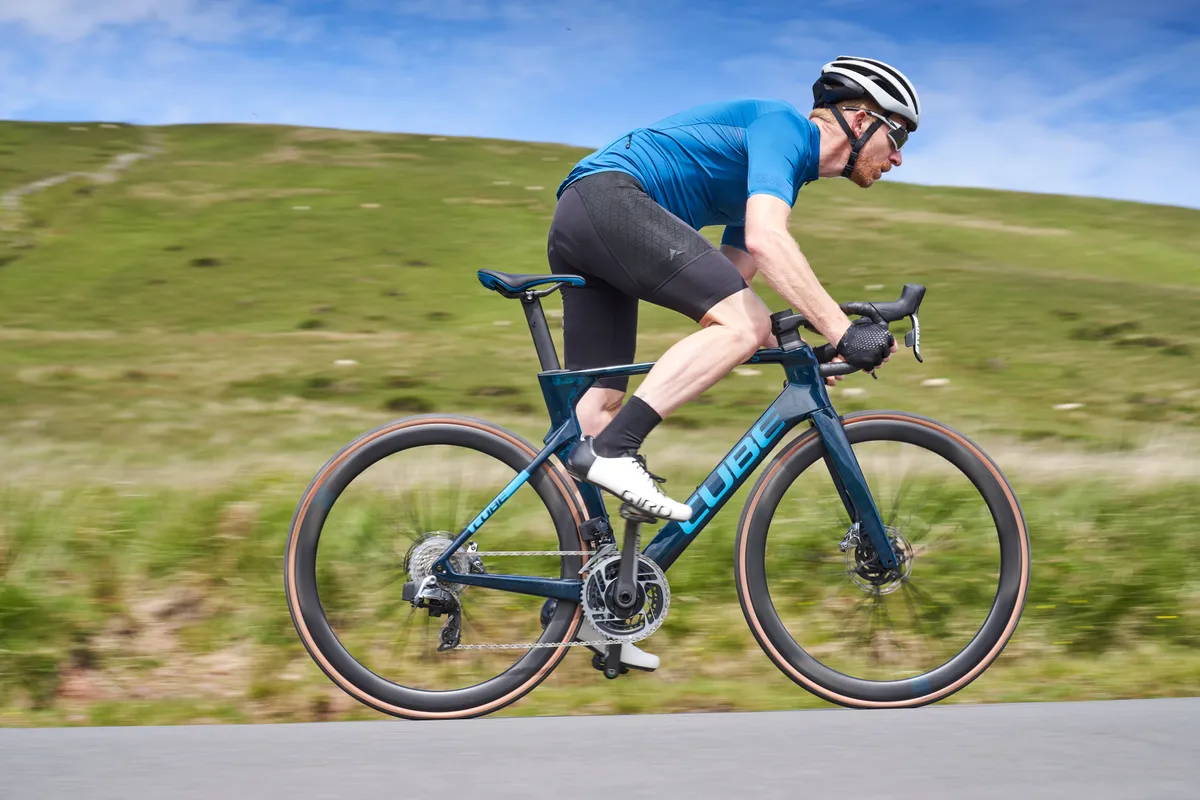
Matt Fitzgerald, author of Racing Weight: How to Get Lean for Peak Performance and co-founder of 80/20 endurance sport coaching, says short, sharp bouts of intervals – such as 10x 30 seconds at full gas with several minutes’ recovery – repeated up to three or four times a week is the most efficient way to lose fat fast.
It’s best to take this approach for weeks, not months at a time in between your off-season base training and more race-oriented VO2 max intervals.
Be sure to stay aware of traffic if you’re doing flat-out efforts on the road and consider indoor cycling for these sessions.
You expend more calories per minute during interval training sessions and after, owing to excess post-exercise oxygen consumption (EPOC). A 2005 study found EPOC equated to 6 to 15 per cent of an intense workout’s net total energy expenditure.
While you can’t burn as many calories in a high intensity interval training session as during a long ride, a high training load is not optimal for fat loss, according to Fitzgerald.
He believes vigorous workouts suppress appetite better than steady rides. This makes you less likely to overcompensate by refuelling with junk food.
On the other hand, Asker Jeukendrup, Team Jumbo-Visma’s nutritionist, says you should prioritise total calorie burn for weight loss. In his view, if you’re restricting carbohydrate intake, long, low-intensity riding is the best way to achieve a negative energy balance.
Both methods work and, whichever you choose, you’ll still need to expend more energy than you take in.
Eat right
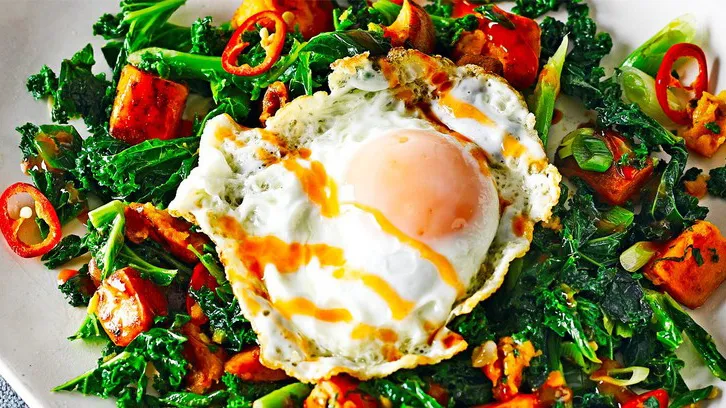
It’s difficult to say if exercise or diet is more important for fat loss. But, according to Fitzgerald, you have more leverage with your diet because you can improve its quality.
Ideally, your diet will complement your exercise. For instance, you eat less carbohydrate and more protein to contribute to a negative energy balance while staying full.
Fitzgerald recommends eschewing processed foods in favour of their more satiating and less calories-dense unprocessed equivalents. For example, swapping white rice for brown rice.
Meanwhile, Alan Murchison, author of The Performance Chef books and nutritionist with Specialized Factory Racing, advocates incrementally cutting portion sizes across the board, but not eliminating any particular food.
He underlines that each macronutrient – protein, carbohydrate and fat – is necessary for a balanced diet, so exclusionary diets such as keto are a bad idea.
Murchison says even the professional athletes he works with eat chocolate and sweets from time to time, but do so in a balanced way.
A manageable deficit of 500 calories a day could see you drop a kilo a week, according to Murchison. A more negative energy balance will make you so hungry you’re likely to then overeat.
Echoing Murchison, Jeukendrup says: “If you go more than that, you have a high risk of just not recovering, becoming overtrained and having all sorts of negative effects.”
Portion control

To integrate portion control into your diet, you could try a change of dinnerware.
A Polish study from 2024 showed that large plates can make food appear smaller, often resulting in over-eating.
If measuring your food isn’t appealing or practical, use the smaller plate as a portion control guide. 2022 research from Australia suggests that doing so leads to balanced eating and weight loss. It can also help you determine the optimal macro- and micronutrient ratio, with roughly half the plate vegetables, a quarter protein, a quarter carbohydrate and a small portion in the centre of the plate that’s fat.
Eat more fibre

Fibre is a nutritional essential because it helps to increase the weight and size of your stool, as well as softening what lies within.
All of this makes passing the aforementioned stool much easier and decreases the chances of constipation. If you look between your legs and see you’ve just emitted a watery stool, it’s a sure sign you need more fibrous foods.
Not only does fibre keep your system running as nature intended, but there are studies that show sufficient intake of fibre prevents belly fat, primarily because it’s believed to suppress appetite.
However, not all fibres are the same because a 2019 study suggests only certain types of fibre have this effect, specifically fibres that are more viscous such as pectins and beta-glucans.
These thicken in water, forming a gel-like substance that sits in your gut and slows the emptying of your stomach, increasing digestion and absorption times. The end result is a prolonged feeling of fullness and reduced appetite.
Viscous fibres occur exclusively in plant foods, with sources including beans and legumes, asparagus, flax seeds, oats and, of course, Brussels sprouts.
Stay strong

Weight training and cycling used to be unhappy bedfellows, with thoughts of a muscle-packed and weighty Arnie struggling up Alpe d’Huez enough to deter the most open-minded cyclists. Times have changed, with studies showing gym work can bolster a rider’s strength and power output, while reducing the chances of injury.
And, according to a wealth of research, it can banish belly fat, too. A 2014 study published in the journal Obesity followed a cohort of 10,500 healthy men for a 12-year period to determine whether weight training or aerobic activity proved more effective at reducing waist circumference (a key measure of abdominal fat). The data revealed that, yes it did, albeit aerobic activity, like road cycling, had the strongest association with reduced body weight overall.
A further study in 2013 found that visceral fat loss was highest in subjects who combined high-intensity resistance training with moderate-intensity cardiovascular activity. So, an off-season mixing pedalling, pressing, pulling and pushing is the ideal.
As for which exercises, you’ll enjoy more bang for your belly buck by focusing on compound exercises. These are movements that target several muscle groups at once, and so rev up your metabolism and kick your body into its fat-burning gear. Exercises include squats and leg presses; bench presses and push-ups; lat pull-downs and pull-ups; and power lifts such as the deadlift.
Go slow, be patient

Jeukendrup says initial weight loss can be rapid. You can lose up to 2kg in the first week of weight loss because your body’s water and glycogen stores diminish. Then you start to lose fat and this happens far slower.
“It depends a little bit, but you're probably looking at 300-400g per week,” he says.
This underscores the nutritionist’s previous point that you need to be able to maintain your dietary modifications long-term to see substantial fat loss.
There’s also no miracle fat-loss solution. The fat-burning properties of supplements and caffeine are often touted, but they deliver minimal weight-loss benefits, according to Jeukendrup.
Jeukendrup says caffeine only lifts fat burning by a fraction of a gram a minute. Eating a little less or exercising more will help much more, he explains.
“People are always looking for the easy way to achieve the goal. Taking a tablet is easier than getting out on the bike, but I don’t think there are any shortcuts,” he says.
The benefits of coffee for cycling are most noticeable in hour-long time trials, according to Jeukendrup, where the stimulant masks feelings of fatigue.
Sleep well
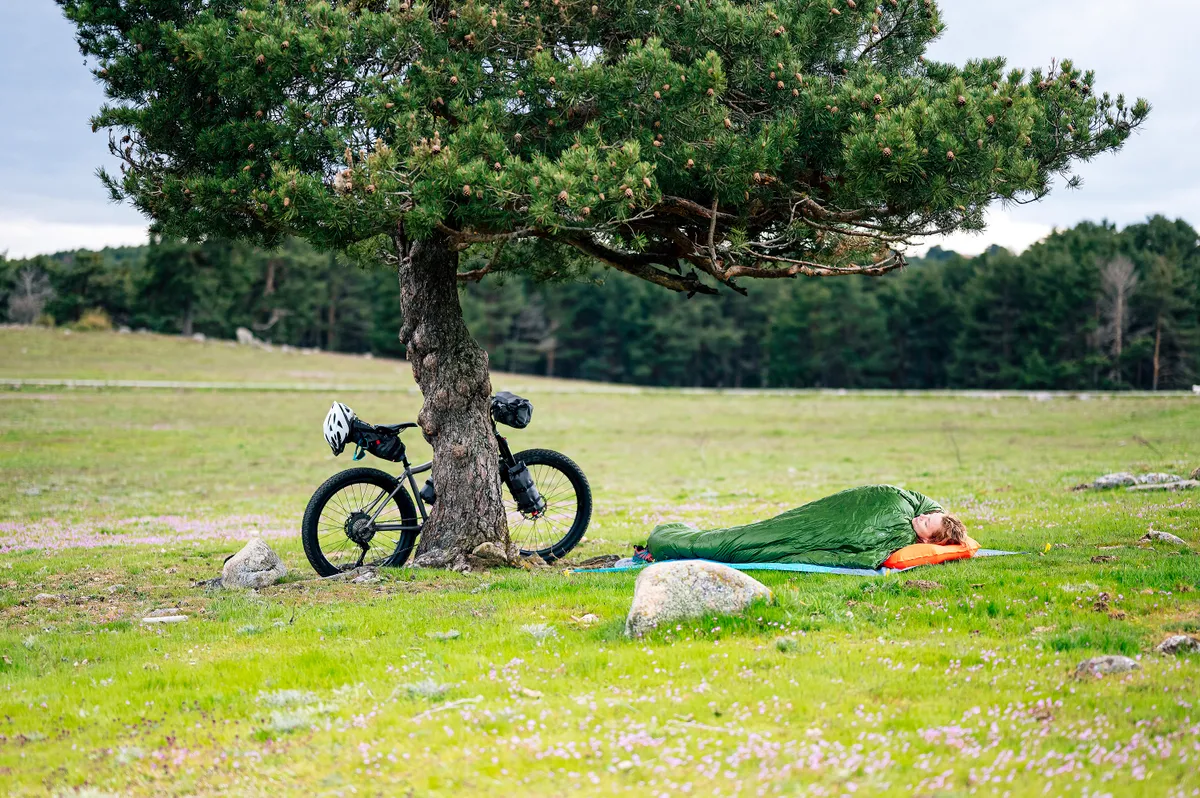
One of the many benefits of getting a good night’s sleep for cycling is weight control.
Research by the Mayo Clinic shows that lack of sleep results in excess belly fat – in this research a 9 per cent increase in abdominal fat and an 11 per cent increase in abdominal visceral fat.
“Our findings show that shortened sleep, even in young, healthy and relatively lean subjects, is associated with an increase in calorie intake, an increase in weight and a significant increase in fat accumulation inside the belly,” says Virend Somers, PhD, the Alice Sheets Marriott Professor of Cardiovascular Medicine and principal investigator of the study.
Healthy individuals were randomly assigned to the control group, who could sleep for nine hours a night, or the restricted group, who were awoken after four hours of sleep. Those deprived of shut-eye racked up more than 300 extra calories per day during sleep restriction, eating 17 per cent more fat, compared to the acclimation stage.
Why the increase? There’s a hormonal element. Insufficient sleep impacts levels of appetite hormones ghrelin and leptin, resulting in poor food choices. There’s also the simple fact that the more hours you’re awake, the more opportunities you have to eat.
Not eating a big meal late on, no caffeine after lunch, layers instead of one big duvet for thermos control and no smartphones and scrolling in bed are all strategies to improve your sleep hygiene.
Stress less

Not everyone’s body reacts to stress by increasing levels of cortisol. But people who do are more likely to overeat, particularly sweet foods, according to a 2001 study.
Happily, regular aerobic exercise such as cycling has been shown to be a great way of combating stress, decreasing anxiety, helping to reduce tension and boost your mood. The same is true for spending time outdoors, which most cycling facilitates.
Cycling more and eating better will certainly help lose belly fat. But the benefits of cycling aren’t reserved for lean riders and weight is no barrier to cycling.
More questions answered
Does riding a bike burn fat?
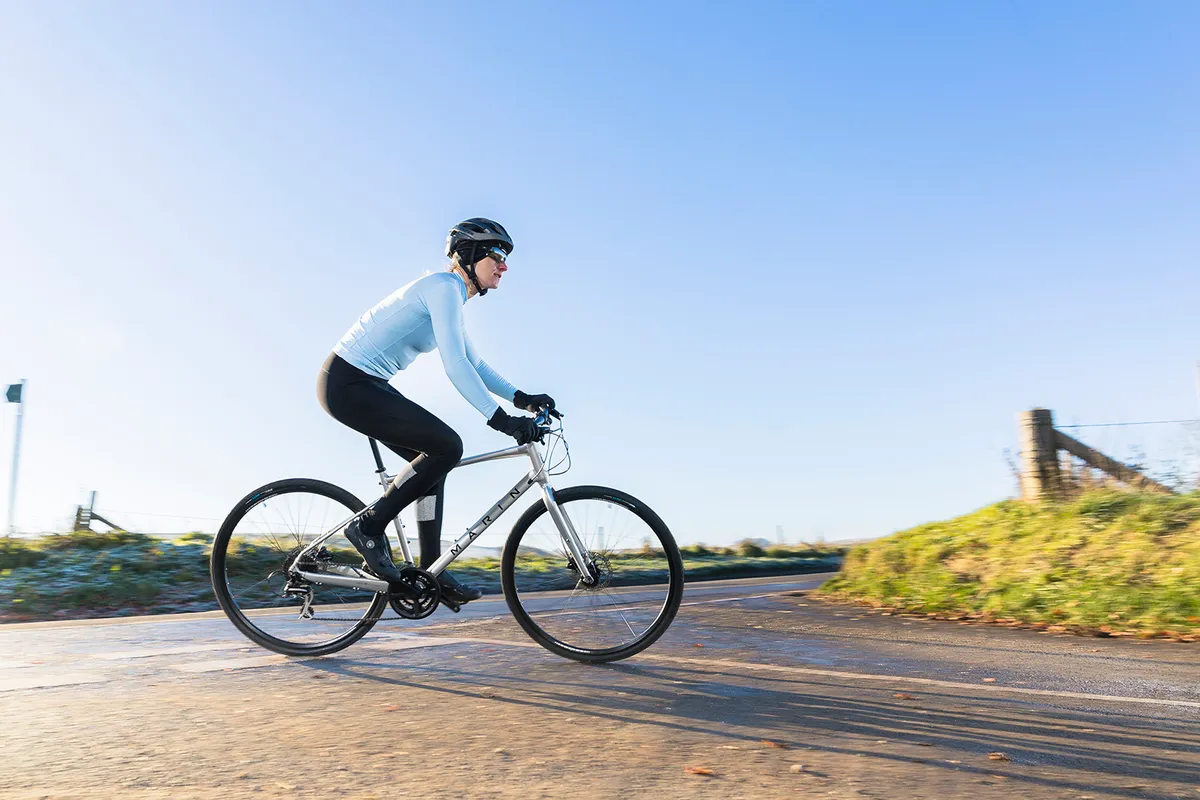
Fat is the body’s preferred fuel source when you ride in your lower-intensity training zones, such as zone two in a seven-zone model.
Training in the fat-burning zone improves cycling endurance and aerobic capacity or VO2 max.
Just remember that burning fat by cycling isn’t the same as losing fat from your body, as Jeukendrup explains.
“You can have high rates of fat burning and not lose any weight at all, or even gain weight," he says.
“Weight loss is all to do with energy balance. It's basically energy in and energy out, and if you burn more than you've taken in, you will lose weight. There is no way around that.”
Calculating exactly what is energy in and energy out is not easy, but when short of calories, the body uses stored fat for energy and to top up depleted muscle glycogen stores. Over time, this process reduces body fat.
Does cycling reduce belly fat?

Whether you can target weight loss remains hotly disputed, but it's arguably irrelevant.
Scientists have examined what happens when participants lose weight while performing resistance and endurance training with a certain muscle group. A 2013 study found localised muscle resistance training led to the whole body becoming leaner, not specifically the area of the body trained.
However, a more recent study concluded fat loss can be localised.
Fitzgerald says “anatomically specific weight loss” is possible, but not from the belly.
“People doing sit-ups to lose belly fat was scoffed at but more recent research has shown that there is site specificity,” he says.
“Cyclists tend to have leaner legs than upper body, so anytime you do whole-body aerobic exercise you will lose fat everywhere, but it is more concentrated in the areas where the muscle is active."
For example, if you want to lose fat on your arms, Fitzgerald recommends swimming, which will activate your arm muscles.
He adds that it's easy to “get stuck in the weeds” of fat loss and forget the basics.
“The average cyclist doesn’t need to worry too much: the basic things of improving diet quality, not eating mindlessly, training smart and progressively are going to do a lot more than doing ice baths to shed brown fat or what have you,” he says.
How can I burn fat by cycling?

The short answer is by riding slower.
As intensity increases, the proportion of fat to carbohydrate your body resorts to in order to fuel cycling decreases. This is because fat reserves are nearly unlimited even in the leanest athletes. Your body tries to preserve its finite carbohydrate stores for when energy is needed quickly.
The timing of the transition from fat to carbohydrate varies from person to person. A 2005 study into fat oxidation concluded that women are better at oxidising fat than men, meaning they have to switch later to easily extinguished carbohydrates.
This may explain why other studies have found women are less likely to bonk and slow down in endurance events such as marathons.
You can raise your maximal fat oxidation or Fatmax (the hardest effort you can sustain while using fat for fuel) by doing lots of zone 2 riding.
While this can help you to ride 100 miles and complete ultra-distance cycling challenges, as discussed previously, it doesn’t equate to weight loss.
